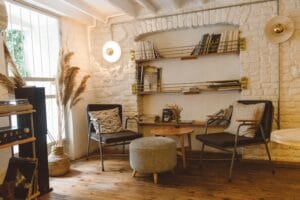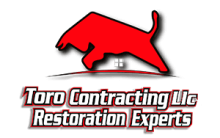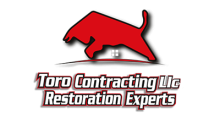Weather-proof flooring isn’t just a luxury; it’s a necessity for homes contending with Maryland’s chilly, moisture-laden falls. Traditional flooring options often struggle to withstand the alternating dampness and cold, leading to warping, mold, or chilly feet. But the good news is, with the right solutions, you can transform your home into a warm, inviting haven that withstands Maryland’s fall climate without compromising on style or comfort.
In this blog, you’ll discover the best weather-proof flooring options specifically suited for Maryland’s fall conditions. We’ll delve into materials that resist moisture and cold, installation tips to maximize durability, and maintenance advice to keep your floors looking pristine year-round. Whether you’re renovating, building new, or upgrading your existing floors, understanding how to choose and care for weather-proof flooring can save you money and preserve your home’s beauty against the elements.
Key Takeaways
Weather-proof flooring is essential for homes facing fall dampness and cold, offering protection from moisture, mold, and temperature changes.
The best options—like luxury vinyl planks, engineered hardwood, and porcelain tile—combine durability, insulation, and easy maintenance.
Proper subfloor preparation and moisture barriers are key to preventing warping and extending your floor’s lifespan.
Weather-proof flooring enhances comfort and energy efficiency by maintaining stable indoor temperatures during cold, wet months.
Investing in resilient flooring materials adds long-term value, beauty, and peace of mind to your home as the seasons shift.
By the end of this article, you’ll be equipped with practical knowledge about:
– The top weather-proof flooring materials ideal for Maryland homes during fall
– How these floors handle moisture and temperature fluctuations
– Installation techniques that enhance weather resistance
– Tips for maintaining weather-proof floors through the wettest and coldest months
Say goodbye to soggy carpets and chilly tiles. Let’s explore how weather-proof flooring can offer you the perfect blend of durability, comfort, and style, ensuring your Maryland home stays cozy and protected as the leaves fall and the temperatures drop.
Why Weather-Proof Flooring is Essential for Maryland Homes Facing Fall Dampness and Cold
As the crisp air of fall settles over Maryland, homeowners begin to notice the subtle yet persistent effects of moisture and cold creeping into their living spaces. Dampness on floors, chilly drafts, and the wear and tear caused by fluctuating temperatures pose real challenges that demand practical and durable solutions. This is where weather-proof flooring becomes not just a luxury, but a necessity.
What Is Weather-Proof Flooring?
Weather-proof flooring refers to specially designed flooring materials and installations engineered to withstand exposure to moisture, temperature changes, and other environmental conditions without compromising their integrity or appearance. Unlike traditional flooring options that may warp, crack, or become moldy when exposed to dampness, weather-proof flooring maintains resilience and style even in harsh conditions. These floors typically feature materials such as vinyl planks with waterproof cores, treated hardwoods, ceramic tiles with moisture barriers, or composite options that resist both water and cold.
The Importance of Weather-Proof Flooring in Maryland’s Fall Climate
Maryland’s fall season is characterized by frequent rain, increased humidity, and dropping temperatures , conditions that collectively contribute to damp and cold interiors if not managed properly. According to the National Oceanic and Atmospheric Administration (NOAA), the Mid-Atlantic region, which includes Maryland, experiences an average rainfall of 3.5 to 4 inches each month during fall. This consistent moisture exposure can seep into flooring materials, leading to swelling, mold growth, or deterioration.
Moreover, the cold temperatures that follow the damp periods can cause traditional flooring materials, like natural wood or untreated laminate, to become brittle or develop gaps as they contract and expand. This cycle accelerates wear and affects indoor comfort by allowing cold drafts to permeate through floor cracks.
Benefits of Embracing Weather-Proof Flooring
- Enhanced Durability: Weather-proof floors resist moisture absorption and thermal expansion, extending the lifespan of your flooring dramatically compared to conventional wood or carpet options.
- Healthier Indoor Environment: Preventing mold and mildew growth helps maintain better air quality, an essential factor given the increase in respiratory illnesses during colder months.
- Increased Energy Efficiency: Sealed, insulated flooring helps keep indoor temperatures stable, reducing heating costs as cold air infiltration is minimized.
- Aesthetic Appeal with Peace of Mind: Advanced weather-proof flooring mimics natural textures like wood or stone, allowing homeowners to enjoy stylish design without sacrificing resilience.
A Real-Life Success Story: The Johnson Family’s Maryland Home Transformation
Take the Johnson family from Annapolis, Maryland, for example. Every autumn, their basement suffered from musty smells and damp carpet caused by heavy rains and rising humidity. After months of battling patchy floorboards and cold floors, they opted for a weather-proof vinyl plank solution designed specifically for moisture-heavy areas.
Post-installation, the change was remarkable. Not only did the flooring remain perfectly intact after a particularly wet October, but the family noticed their heating bills dropped by 15% the following month. Even their teenage daughter commented on how much warmer and comfortable the basement felt during late-night study sessions.
Stories like the Johnsons’ illustrate the tangible benefits of investing in weather-proof flooring, especially in regions like Maryland where fall dampness and cold are routine challenges.
Embracing weather-proof flooring solutions equips Maryland homeowners with a reliable shield against the season’s weakening grip. By understanding what weather-proof flooring is and recognizing its benefits amid Maryland’s fall climate, you can make informed choices that protect your home, enhance comfort, and safeguard your investment for years to come.
How to Apply Weather-Proof Flooring Step by Step for Maryland Homes Facing Fall Dampness and Cold
When the crisp air of fall settles over Maryland, bringing with it dampness and cold that seep into homes, having weather-proof flooring becomes essential. Weather-proof flooring is designed to withstand moisture, temperature fluctuations, and everyday wear, keeping your home comfortable and your floors durable in harsh conditions. If you’ve been wondering how to install and maintain weather-proof flooring effectively, this comprehensive step-by-step guide will walk you through the process, ensuring you get the maximum benefit from your investment.
Step 1: Assess Your Home’s Specific Needs
Before selecting any weather-proof flooring, begin by evaluating the unique challenges that your Maryland home faces. Fall in Maryland brings:
– High humidity and dampness caused by frequent rain and morning fog.
– Cold temperatures that create the potential for floor warping or cracking.
– Areas prone to water accumulation, such as basements, entryways, or mudrooms.
Tip: Inspect flooring in areas vulnerable to moisture. Identify spots prone to condensation or leaks. This tailored evaluation ensures you choose the perfect flooring material and installation method.
Step 2: Choose the Right Weather-Proof Flooring Material
Not all weather-proof flooring performs equally in damp and cold conditions. Consider the following top choices suited for Maryland’s fall climate:
– Luxury Vinyl Planks (LVP): Waterproof, resistant to scratches, and thermal insulating properties.
– Porcelain or Ceramic Tiles: Impervious to moisture, easy to clean, and retain heat well with radiant underfloor heating.
– Engineered Hardwood: More stable than solid hardwood under humidity fluctuations, especially when sealed correctly.
– Rubber Flooring: Highly water-resistant, warm underfoot, and ideal for mudrooms or basements.
Pro Tip: Look for flooring materials labeled 100% waterproof or water-resistant, and check manufacturer warranties concerning installation in high-moisture environments.
Step 3: Prepare the Subfloor to Prevent Moisture Problems
A weather-proof floor is only as good as its foundation. Proper subfloor preparation minimizes future issues such as mold or warping.
– Inspect Subfloor: Repair cracks, uneven areas, or damages.
– Moisture Barrier Installation: Lay a high-quality moisture membrane or vapor barrier to block dampness from penetrating.
– Level Surface: Use self-leveling compounds if necessary, especially for tile or vinyl installations.
Step 4: Acclimate Flooring Materials
Bringing new flooring into a humid and cold Maryland home requires acclimatization:
– Duration: Leave flooring materials in the room where will be installed for 48–72 hours.
– Purpose: This balances moisture content and temperature between the material and the room.
– Outcome: Prevents expansion, contraction, or gaps after installation.
Step 5: Follow Manufacturer’s Installation Guidelines
Precision during installation guarantees longevity and performance.
– Floating Floors: Many luxury vinyl products can be clicked together as floating floors – ideal for easy installation over existing substrates.
– Glue-Down: In damp areas, adhesive installation might be preferred to seal flooring tightly.
– Grout and Seal: For tile floors, use waterproof grout and sealants to block moisture.
– Expansion Gaps: Leave appropriate expansion gaps around room edges to accommodate natural material movement.
Step 6: Install Proper Insulation and Heating Options
Cold Maryland falls can be harsh on any flooring. To enhance comfort and durability:
– Underfloor Heating: Electric or hydronic radiant heat systems maintain warmth and dry the floor surface.
– Insulation: Adding insulation beneath subfloors reduces cold transfer and moisture condensation.
Step 7: Regular Cleaning and Maintenance for Weather-Proof Floors
Weather-proof doesn’t mean maintenance-free. To keep your floors in pristine condition:
– Daily Care: Sweep or vacuum to remove dirt and grit that can scratch surfaces.
– Mop with Damp Cloth: Use mild cleaners specifically designed for your flooring type.
– Avoid Standing Water: Quickly wipe spills or puddles, especially near entryways.
– Seasonal Checks: Inspect for wear, sealing conditions, or any signs of moisture damage.
Example: Installing Luxury Vinyl Planks in a Maryland Mudroom
To visualize, imagine a Maryland mudroom regularly exposed to wet shoes and muddy boots each fall. Here’s a quick breakdown of applying weather-proof luxury vinyl planks:
- Clean and Level: Ensure subfloor is clean and level.
- Lay Moisture Barrier: Place a vapor barrier to block damp floor effects.
- Acclimate LVP: Let planks adjust to room temperature and humidity for 48 hours.
- Install Floating Floor: Click planks locking edges together, leaving 1/4 inch expansion gap.
- Seal Edges: Apply silicone caulk along perimeter to block moisture seeping.
- Add Entry Mats: Place absorbent mats to trap water at doorways.
With these steps, your mudroom remains warm, dry, and stylish throughout the wet and chilly Maryland fall.
Embracing weather-proof flooring solutions with careful planning and execution ensures your Maryland home stays cozy and protected against fall dampness and cold. Whether selecting materials, preparing subfloors, or maintaining finishes, this step-by-step approach turns potentially challenging seasonal conditions into comfortable and beautiful living spaces.
Tips for Choosing Weather-Proof Flooring for Maryland Homes Facing Fall Dampness and Cold:
✅ Opt for Waterproof Materials: Select flooring types like vinyl, ceramic tile, or sealed concrete that resist moisture infiltration during Maryland’s wet fall season.
✅ Prioritize Insulation: Choose flooring with built-in insulation or add a thermal underlay to help retain warmth and reduce cold drafts entering your home.
✅ Consider Slip Resistance: Wet floors can be hazardous, look for textures or finishes that offer good grip to prevent slips on damp surfaces.
✅ Seal All Edges Thoroughly: Ensure all flooring edges and seams are sealed properly to block out moisture and prevent water damage caused by fall rains and humidity.
✅ Embrace Raised or Floating Floors: These designs allow air circulation underneath, preventing trapped moisture and mold growth even when humidity spikes.
✅ Keep Maintenance Simple: Select flooring that is easy to clean and resistant to stains from mud or leaves common in Maryland’s autumn months.
✅ Use Rugs Strategically: Place weather-resistant area rugs at entrances to catch moisture and dirt, protecting your flooring and improving indoor comfort.
✅ Monitor and Control Indoor Humidity: Supplement weather-proof flooring with dehumidifiers or ventilation systems to maintain a dry, healthy indoor environment during the damp, chilly fall season.

Key Concepts
When we delve into the realm of weather-proof flooring, especially in the context of Maryland homes bracing for fall’s dampness and cold, we are exploring much more than mere floor coverings. It is a dynamic interplay between materials, environmental challenges, and the human desire for comfort and durability that must withstand nature’s cycles.
The Nature of Weather-Proof Flooring
Imagine your flooring as a shield, a resilient barrier between the often harsh external elements and the cozy interior sanctuaries we call home. Weather-proof flooring is designed with this metaphorical shield in mind, engineered to resist moisture intrusion, temperature fluctuations, and the subtle but persistent wear caused by seasonal changes.
Maryland’s climate, characterized by moist autumns, sudden temperature swings, and cold winters, imposes unique stress on flooring surfaces. A weather-proof floor acts like the bark of a sturdy tree, impermeable to rain and frost, yet allowing the home to breathe. It’s this duality, impervious and adaptive, that defines the essence of weather-proof flooring.
Material Synergies: More Than Just Surface
At its core, weather-proof flooring is a fusion of materials selected not just for beauty but for their scientific properties. Think of materials like vinyl composites, sealed hardwoods, ceramic tiles with enhanced grout sealing, or engineered laminates. Each material tells a story about resilience:
– Vinyl composites behave like a second skin for the floor, flexible yet tough, repelling water and resisting swelling.
– Sealed hardwood conjures the image of a well-armored knight. Traditional hardwood might absorb moisture and warp; sealing treatments create an invisible fortress that locks out dampness.
– Ceramic tiles, often seen merely as decorative, become stalwart guardians when paired with resistant grouting and underlying moisture barriers.
– Engineered laminates blend layers crafted with precision, offering dimensional stability that natural wood alone cannot provide in wet conditions.
Thus, weather-proof flooring is not a single material but a thoughtful match of substance and application to outwit nature’s attempts to disrupt interior comfort.
The Dance with Moisture
Moisture is the silent adversary in Maryland’s fall and winter seasons, creeping under doors, condensing as invisible vapor, or seeping through basement cracks. A floor that succumbs to this invisible enemy quickly shows signs of distress: warping, mold growth, sticky surfaces, and even structural damage.
Visualize moisture as an invading tide, relentless and patient. Weather-proof flooring acts like a levee system, either repelling water outright or channeling it harmlessly away from vulnerable layers beneath the surface. Without this crucial defense, the integrity of the floor, and the health of the household, can be compromised.
Thermal Stability: Comfort Beneath Your Feet
Cold floors are more than a sensory discomfort; they influence the warming efficiency of any home. Weather-proof flooring contributes to thermal stability by minimizing heat loss through floors. Its composition often incorporates insulating qualities or works seamlessly with underfloor heating systems.
In Maryland’s chillier months, a floor that tolerates cold without cracking or contracting is akin to a well-trained athlete, it maintains its form in tough conditions, ensuring not only durability but a welcoming warmth underfoot.
Longevity and Aesthetics: The Harmonious Balance
One might imagine that weather-proof flooring sacrifices style for function, but this is far from the truth. Modern advancements blur the lines between durability and design. Flooring solutions now transcend the utilitarian to embrace aesthetics that reflect personal taste, from rustic, weathered wood appearances to sleek, contemporary finishes.
This balance is crucial, homes are emotional refuges, and flooring plays a silent yet substantial role in shaping that emotional landscape. The right weather-proof flooring solution assures homeowners that their investment will prevail through seasons, remaining a consistent backdrop to everyday memories and traditions.
Environmental Adaptation and Sustainable Choices
There is also a growing narrative around sustainability embedded in weather-proof flooring. Just like a forest ecosystem adapts to seasonal changes to protect itself, modern weather-proof flooring solutions increasingly incorporate eco-friendly materials and production processes that reduce environmental footprints.
This adds a layer of philosophical depth to the concept: investing in weather-proof flooring is not just a personal comfort or economic decision, but a statement on harmony with the environment, a promise that our built spaces can coexist responsibly with nature’s rhythms.
In essence, weather-proof flooring for Maryland homes is a sophisticated marriage between science and storytelling, durability and design, defense and warmth. It embodies an understanding that floors are more than surfaces, they are foundational elements of how we experience and protect our homes against the persistent whispers of fall dampness and cold.
Frequently Asked Questions about Weather-Proof Flooring for Maryland Homes
❓ What is weather-proof flooring and why is it important for Maryland homes?
Weather-proof flooring refers to flooring materials designed to resist moisture, temperature changes, and other harsh weather conditions. For Maryland homes facing fall dampness and cold, this type of flooring helps prevent warping, mold, and deterioration, ensuring durability and comfort during wet and chilly months.
❓ Which flooring materials are best suited for handling fall dampness and cold in Maryland?
Materials like vinyl plank, ceramic tile, and certain treated hardwoods are ideal. These options provide excellent resistance to moisture and temperature fluctuations common during Maryland’s fall season, making them practical and long-lasting solutions.
❓ Can weather-proof flooring improve indoor air quality in damp conditions?
Yes. Flooring that resists moisture reduces the chances of mold and mildew growth, both of which can negatively affect indoor air quality. Choosing weather-proof flooring helps maintain a healthier home environment, especially during Maryland’s damp fall months.
❓ Is weather-proof flooring difficult to install or maintain?
Most modern weather-proof flooring options are designed for relatively easy installation and low maintenance. For homeowners in Maryland, regular cleaning and proper sealing (if applicable) ensure the flooring remains effective against fall dampness and cold without significant effort.
❓ Does weather-proof flooring add value to my Maryland home?
Absolutely. Installing weather-proof flooring not only protects your home from seasonal weather effects but also enhances its durability and aesthetic appeal. This investment can increase your property’s resale value by offering a reliable and attractive feature that appeals to future buyers.






